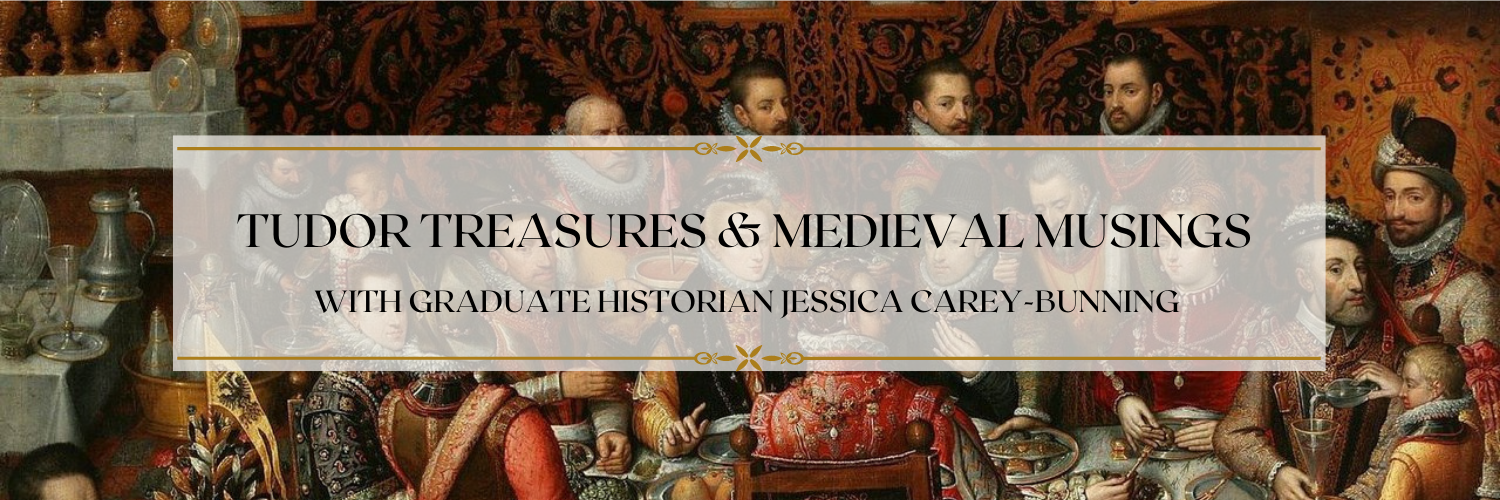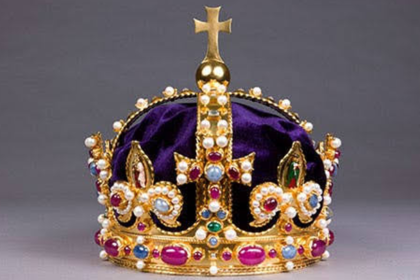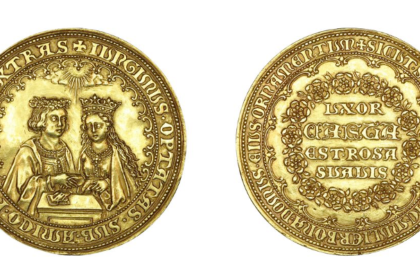When Mary I died on the 17th November, 1558, she was genuinely mourned by many of her closest ladies and courtiers. The response from her own husband, however, was rather tepid. Philip of Spain and Mary had been somewhat estranged for around a year when she passed away; though Mary was devoted to her husband, he viewed Mary and England as a means to defeat France. Still, it was a very cool response to the death of a woman he had been married to for almost 4 years, and had known, through letters and diplomacy, for most of his life.
We are very lucky to have quite an honest reflection of Philip’s feelings at the death of Mary; he was in Brussels, on the 4th of December, writing a letter to his sister, Joanna of Austria, who was serving as regent of Spain for Philip at the time. At the start of his letter, he speaks very emotionally about the deaths of his father, Charles V, and his aunt, Mary of Hungary:
‘When this (Charles V’s death) had happened, came the death of the Queen of Hungary, my aunt. You may imagine what a state I am in. It seems to me that everything is being taken from me at once. Blessed be The Lord for what He does! One must say nothing, but accept His will, begging Him to be content with what He has already done…’
He then does mention his wife’s illness in passing, clearly more concerned with the impact it will have on his war with France:
‘To conclude peace without the return of Calais would make the whole kingdom of England rise in indignation against me…England went to war on my account, I am obliged to pay great attention to this matter. If God were to call the Queen, it would be especially necessary to keep the English satisfied, for many reasons. . .’
At this point, Philip was clearly interrupted, with news of Calais and of his wife’s death; you can see what matter was of greater concern to him:
‘After I had written the above, I received letters from my commissioners (at the peace-negotiations). They say the French remain as obdurate as ever about Calais; but it had been agreed to prolong the suspension of arms in these parts for six weeks to two months, until it should be seen what the English decide on the subject (Calais). Our commissioners have asked the French to set their views down in writing on the subject of a match between the Prince and the King of France’s daughter, and the surrender of places occupied by both sides and other outstanding points, so that everything may be disposed of except Calais. The French excused themselves on the ground that this was not necessary, the exchange of views that had taken place being sufficient. This happened in the presence of the Duchess of Lorraine, and not at the place where they were accustomed to meet. The Calais question cannot be settled so soon, now that the Queen, my wife, is dead.’
You could almost miss the news of Mary’s death, tagged on to the end of the French situation. He then goes on, very coldly in comparison to his heart wrenching grief at the deaths of his father and aunt:
‘I felt a reasonable regret for her death. I shall miss her, even on this account. I have given my agreement to the prolongation of the truce, in order not to break off with the French, and I shall seek to induce the English to agree to terms making it possible to conclude a peace for the general good…’
I think most people would expect at least a little more emotion from their spouse if they died!
Philip was not just concerned about the impact on his war with France, though. We have a list that he had drawn up, of all the precious jewels and goods that he had left in England and wished to have returned; quite large sections of it was written by Philip himself, showing the importance he placed on the matter. Quite a few of the items were gifted to him by Mary, eager to please and win the love of her husband; Philip’s disdain for many of these gifts is made apparent. I’ve included the very long list of items at the end of this post.
The worst part of Philip’s behaviour after Mary’s death? His proposal of marriage to his late wife’s sister, the newly ascended Queen Elizabeth I. He began to formulate these plans less than 2 months after her death. He wrote to his ambassador, Count de Feria, on the 10th January, 1559:
‘I nevertheless cannot lose sight of the enormous importance of such a match to Christianity and the preservation of religion which has been restored in England by the help of God. Seeing also the importance that the country should not fall back into its former errors which would cause to our own neighbouring dominions serious dangers and difficulties, I have decided to place on one side all other considerations which might be urged against it and am resolved to render this service to God, and offer to marry the queen of England, and will use every possible effort to carry this through if it can be done on the conditions that will be explained to you.
The first and most important is that you should satisfy yourself that the Queen will profess the same religion as I do, which is the same that I shall ever hold, and that she will persevere in the same and maintain and uphold it in the country, and with this end will do all that may appear necessary to me. She will have to obtain secret absolution from the Pope and the necessary dispensation so that when I marry her she will be a Catholic, which she has not hitherto been. In this way it will be evident and manifest that I am serving the Lord in marrying her and that she has been converted by my act.
You will however not propose any conditions until you see how the Queen is disposed towards the matter itself, and mark well that you must commence to broach the subject with the Queen alone as she has already opened the door to such an approach…
Nothing has been said to the Pope nor is it desirable until the Queen’s consent has been obtained.—Brussels, 10 January 1559.’
~
‘Memorandum of the jewels that lie in a coffer at Whitehall
In case you have to band over this list and have it translated, I am setting down here what I remember as when and how the things were given to me.
The golden objects, precious stones, jewels and garments which his (or her) Majesty wished to have left in England were all packed in a trunk which was bought in London and which was deposited, locked, in the late Queen’s chamber. The key of the coffer is being sent herewith.
I have a ring which the Queen sent to me. I do not know whether it was in this coffer this last time I was in England. I think you saw it. Let me know whether it should be given back so that I may send it to you.
A rich garter, with two large facetted diamonds, a large pearl, five flat diamonds set in a rose pattern, twelve flat rubies round the garter, set two by two, and twenty-four pearls set two by two. The Earl of Arundel attached this to my leg on board ship at Southampton.
A chain of fifty-eight links, each link carrying diamonds or rubies, two stones on each, together with a St. George in armour made of diamonds, and the dragon formed by a pearl. The Earl of Arundel hung this round my neck on the same occasion.
A chain of thirty-five links, nine of them with two diamonds each, five and four with two rubies each, all small stones, and eighteen links with two pearls each and eight links without stones, together with a St. George in armour made of diamonds and the caparison of the horse also of diamonds, and on St. George’s back a red cross. The belly of the dragon is a pearl. One of the links of this chain which bears no stone has part of it missing. This was given to me later, I think, together with the suit.
A St. George of gold, without a chain, the horse’s haunches and belly made of a pearl and a little diamond as a headpiece, and the dragon in green. His Majesty paid the Queen’s silversmith for this St. George. It is enclosed in a little gilt case. I bought this as it is said here.
Another St. George in rusicler enamel, with a white horse and a garter round it, and two other St. Georges, smaller than the foregoing, one above the other, one of these being very small.
Another St. George on a black ribbon. These four St. Georges are in a small round case. Of these, some were given to me by the Queen, and I bought others. A necklace in two pieces, with five flat diamonds and four rubies on one of the pieces, and sixteen pearls set two by two on the other, this latter being the front part. One of the diamonds is a large one, and there are also six rubies, and twenty pearls, two by two. This was sent by the Queen for me to wear it at the opening of Parliament with my robes, although I only wore the garter, as you saw.
Another small necklace with thirteen roses, a garter and thirteen knots, as well as a small St. George, in a black velvet case. This was sent to me by the Countess of Arundel as a valentine.
Three garters of purple velvet, with their pieces, clasps, settings and braid, nothing being missing. One of them has a pearl in a setting. All three are in a white case. I believe I bought these also.
A dagger which the Queen gave to his Majesty in England, complete with its stones and chain, and the sheath with its stones and pearls, nothing being missing, enclosed in a case. This was sent to me by the Queen with Lord Pembroke, one Garter-day.
A velvet cap, also given to his Majesty by the Queen, with its stones and pearls and a bonnet with a little chain and a medal with diamonds and rubies, and white plumes.
This was sent to me by the Queen in the house where I spent the night before entering London, and I wore it on my head on that occasion.
A purple velvet cloak with a long train, with its garter and tassels, lined in white taffeta. This was placed on my shoulders at Windsor, and I did not leave it here, because I had another one made without a train, with a purple robe underneath, like one of the Order (of the Golden Fleece).
A French robe of cloth of gold adorned with crimson velvet and thistles of curled gold, lined in crimson satin, with twelve buttons made of four pearls each on each sleeve, making twenty-four in all. I wore this at my wedding, and the Queen sent it to me for that purpose.
Another French robe of cloth of gold, with the roses of England and pomegranates embroidered on it, adorned with drawn gold beads and seed pearls. The sleeves carry eighteen buttons, nine on each, made of table diamonds. The lining is of purple satin. This was given to me by the Queen for me to wear on our wedding day in the afternoon, but I do not think I wore it because it seemed to me ornate. This is what I had in England. If there is anything more in that kingdom it is my property; but I do not think there is anything more.’




